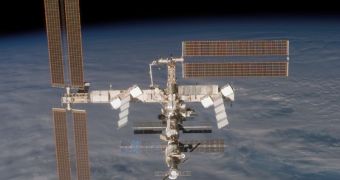This week, two Russian cosmonauts on board the International Space Station (ISS) walked out into space and climbed on the station to install deflector shields, in fact protective panels designed to shield the orbiting station from dangerous space debris and small meteorites.
During this spacewalk, the two astronauts discovered a bullet-sized hole produced by the impact with a meteoroid - the name given to meteorites while in space - but the three-person US-Russian team of astronauts inside are not in danger, according to Russian officials.
The hole was punctured in an outer pumping component on the module, but it's pretty close to the crew's quarters on the ISS. In fact, it's the first time a meteorite hole is found in close proximity to the residential area, although several holes have been observed on the big solar panels that spread out from the station.
This discovery reinforced the value of the space shields installed last week, that were absolutely necessary, as space debris and meteorite are very dangerous, for the ISS, orbiting about 220 miles (350 kilometers) above Earth.
Space debris are the objects in orbit around Earth created by humans that no longer serve any useful purpose. They consist of everything from entire spent rocket stages and defunct satellites to explosion fragments, paint flakes, dust and slag from solid rocket motors, coolant released by RORSAT nuclear powered satellites, deliberate insertion of small needles and other small particles.
Most meteoroids disintegrate when entering the Earth's atmosphere. However an estimated 500 meteorites ranging in size from marbles to basketballs or larger do reach the surface each year; only 5 or 6 of these are typically recovered and made known to scientists.
A bullet-sized meteorite may not sound too dangerous, but considering that the ISS itself travels at an average speed of 27,744 km (17,240 miles) per hour and adding the speed of a meteorite coming from a somewhat opposite direction, the resulting impact will have an impulse equal to the sum of the two relative speeds.

 14 DAY TRIAL //
14 DAY TRIAL //